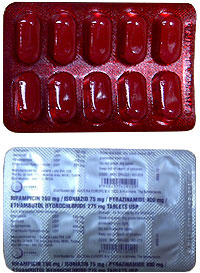
Antibiotic treatment against TB became successful for the first time in 1944 with the discovery of streptomycin. By the 1970s, the addition of rifampicin to a regimen of streptomycin, isoniazid, and ethambutol allowed a shortening of treatment of 12-18 months to 9-12 months. In the 1980s, the replacement of streptomycin with pyrazinamide yielded more rapid sterilisation, allowing a further shortening of treatment to 6-8 months, even without optimal drug dose assessments for some of the drugs in the combination regimen.
TB management became so successful by the late 1980s that the US Department of Health and Human Services predicted TB would be eradicated from the country by 2010. However, in Africa TB became a major public health issue again due to the rise of HIV infection, which is the strongest risk factor for active TB. The incidence of TB in eastern and southern Africa more than tripled in the 1990s, because of the overlapping epidemics of HIV and TB infection. Standard minimum treatment for TB, as recommended by the World Health Organisation (WHO), still includes a combination of isoniazid, rifampicin, pyrazinamide, and ethambutol for six months.
The first-line TB drug rifampicin is considered the cornerstone of current TB treatment. Rifampicin was initially approved for the treatment of TB by the Food and Drug Administration (FDA) in 1971, after a range of trials and case series had demonstrated the efficacy of rifampicin-containing regimens in a dose of 600 mg (±10 mg/kg) daily. Currently, this 600 mg dose is being re-evaluated, and higher doses of rifampicin have been tested in patients with pulmonary TB as well as TB meningitis. Very recently within the PanACEA consortium, much higher oral doses of rifampicin, up to 35 mg/kg daily, were administered safely in African pulmonary TB patients, resulting in strongly increased plasma exposures and a reduced time to culture conversion.
Overall, available literature suggests that further dose optimisations are required to deduce the optimal dose of rifampicin in different populations and TB manifestations. The current 600 mg dose seems to be at the lower-end of the exposure-response curve, and indeed the selection of the 600 mg dose in the past had largely been based on the minimum effective dose that could be implemented at low enough costs.
